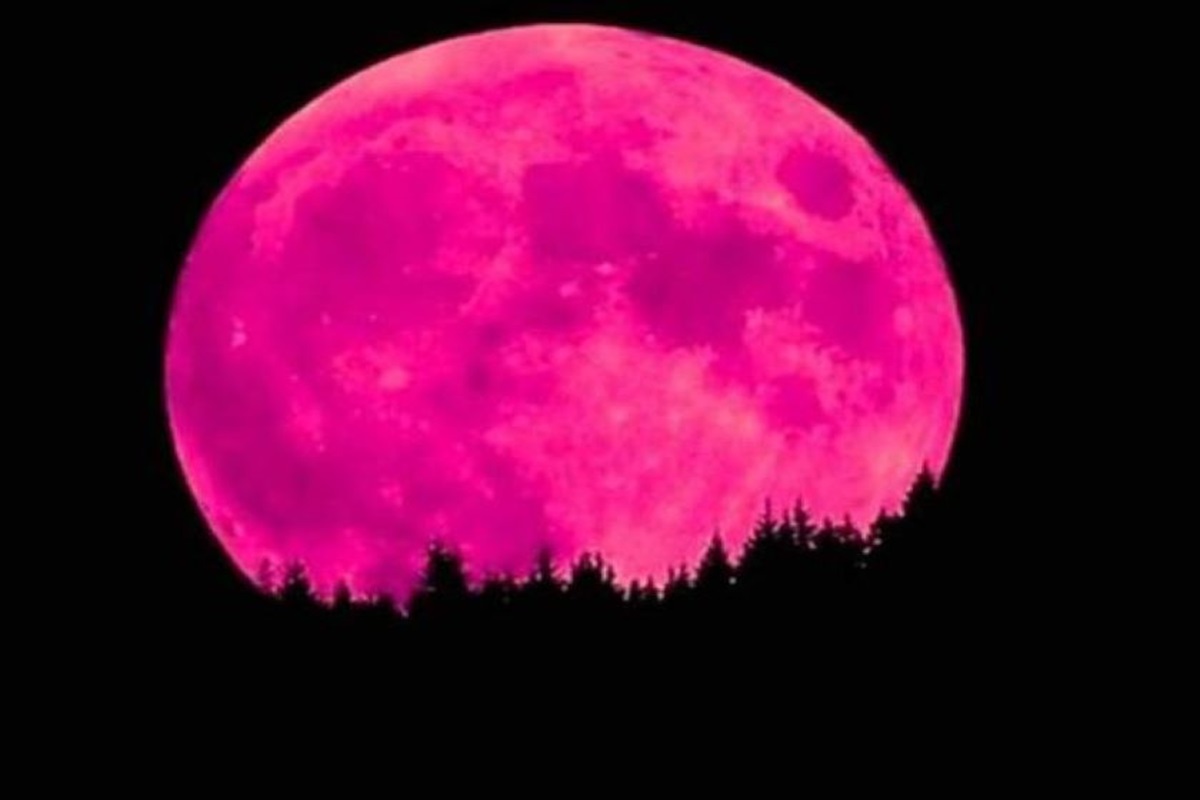The April full moon is known as the pink moon. It has been seen worldwide and called by various names like ‘Full Pink Moon’, ‘Fish Moon’, ‘Breaking Ice Moon’, and ‘Evening Moon’. People are always curious about the pink moon. Events are organized globally to celebrate this rare moon sighting. When the moon is full, it’s closest to the sun, lighting up the sky. There are many reasons behind naming the pink moon.

In the United States, a special flower called mountain phlox blooms in spring. This pink flower symbolizes the arrival of spring. The moon is named Pink Moon after this flower. The color of the moon appears differently to us due to dust or gas. Also, smoke or pollution can block the light reaching Earth. Light is scattered based on its wavelength.
Blue light scatters the fastest, while red light travels farther. From Earth, the Moon can appear brown, blue, light blue, silvery, golden, or light yellow. Sometimes, it may seem slightly larger due to scattering. Astronomers call this phenomenon the scattering of light. The term ‘super moon’ was first used by astronomer Richard in 1979.
The cultural significance of the pink moon adds another layer of intrigue to this natural phenomenon. Across cultures and traditions, the moon has been revered and celebrated for millennia, often serving as a symbol of renewal, fertility, and spiritual awakening.
The presence of dust, smoke, or pollution in the atmosphere can further alter the appearance of the moon. These particles can scatter light in different ways resulting in a variety of hues being reflected off the lunar surface.
Leave a Reply